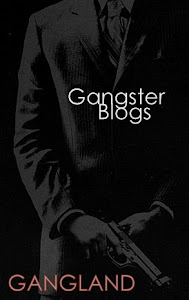Redd Alert and Indian Posse are established in jail, for safety, but often aren’t maintained closely after inmates are released, said Lethbridge regional police Const. Ric Wallace.
“You could almost call it disorganized crime rather than organized crime,” he said, adding aboriginal gangs have no visible street presence locally. “Although they’re on our radar, it’s not something we’re actively looking at.”
On the Blood Reserve, unsophisticated gangs known as the Bloods and the Crypts who were once prominent have largely disappeared in the past few years.
Several offshoots maintain a minor presence but consist mainly of teens who hang around together and wear bandanas to indicate their affiliations, said Sgt. Dean Syniak of the Blood Tribe Police.
None are linked to organized criminal activity, he said.
“A lot of these kids are just lost and bored,” he said. “We don’t feel there is a threat to the community, but there is a strong potential.”
Syniak said fostering a stronger cultural identity among young natives is essential to preventing gang activities from escalating, and added he has seen increasing levels of community involvement and support on the reserve for early prevention and education initiatives.Children on the reserve as young as nine years old are known to identify themselves with gangs in some way. One of the current concerns for tribal police is an initiation ritual that has youth burning themselves with cigarettes.“There are (a lot) of people who’ve lost their way, and they’re very susceptible to falling into the gang environment,” said Taber police Chief Alf Rudd, who formerly served as police chief for the central-Alberta aboriginal community of Hobbema which has long been plagued by drug problems and serious gang violence.
“For any youth on a first nation, it’s just the allure of this sensational, glamorous lifestyle — the money, the clothes, the friends. That’s what attracts them, but it’s exactly the opposite of that,” said Rudd, who was Blood Tribe Police chief before working in Hobbema. “It’s violence and intimidation as soon as you walk in the door. Once you get inside, you’re trapped.”
More than a dozen gangs are battling for control of the drug trade on the four aboriginal reserves that surround Hobbema, about 70 kilometres south of Edmonton. Drive-by shootings are common, and gangs peddle crack cocaine from derelict homes in a few old neighbourhoods that resemble inner city ghettos.
On the Piikani Reserve, police say the only semblance of gang activity has been young “wannabes” who don bandanas and strut around in groups.
“We don’t have any (gangs). That’s a positive thing and very surprising,” said Sgt. Sonny Richards of Piikani RCMP.
He noted the strong cultural identity, the involvement of tribal elders, and the use of healing circles with helping keep the reserve’s youth crime rate low.
“It’s a small community, and anything out of the norm is brought to our attention,” he said. “We’re not saying we’re perfect. We do have a handful of individuals we deal with on a regular basis.”
Totten’s study found that members of organized aboriginal gangs commonly recruit their own girlfriends and female family members who become sex slaves used to generate cash for the gangs.
“(Girls) tend to join gangs because they’ve got a friend, a father, an uncle in the gang,” Totten said in a telephone interview from his office in Gatineau, Que. “Pimping your niece or your daughter or your sister is not an unusual occurrence.
“Sexual exploitation and trafficking of girls and young women is very common in some communities,” Totten said. “Most of them are gang raped as part of an initiation ritual.”
The study also found suicide is the most common cause of death among gang members, and its findings suggest young aboriginal gang members are “killing the Indian part of themselves” through extreme acts of violence.
“They don’t have an identity outside of a gang identity,” Totten said. “Mainstream Canadians really aren’t that interested in the plight of aboriginal people because it really doesn’t affect them and because they really don’t care. And so, aboriginals are at the bottom of the social ladder in this country.”
Although officials may have to think outside the box to contain the problem, Rudd said traditional gang suppression and law enforcement are still an essential part of the solution.
“You can’t let up.”He cited the creation of the Hobbema Community Cadet Corps as an example of the police and the community helping children and teens foster positive identities instead of negative gang identities. He estimated 1,000 children and teens from the community now take part in the cadet program.
GANGWORLD CUSTOM SEARCH

Custom Search
Subscribe to:
Post Comments (Atom)













0 comments:
Post a Comment